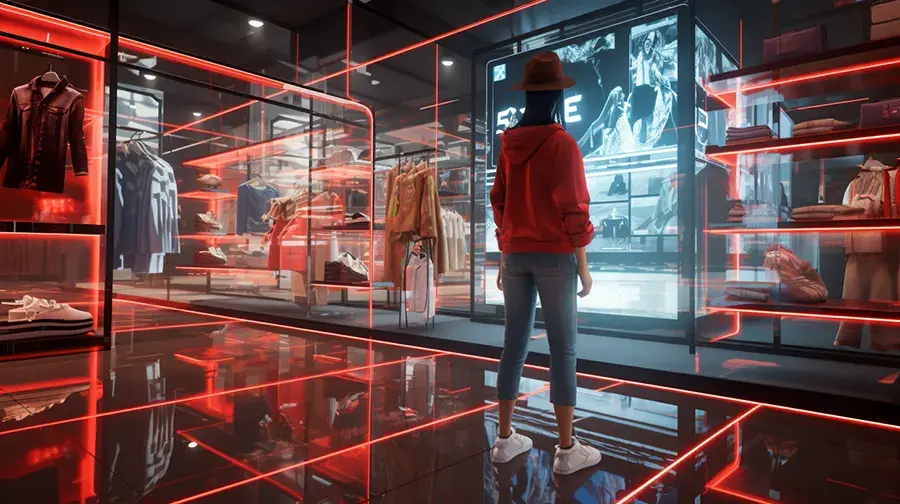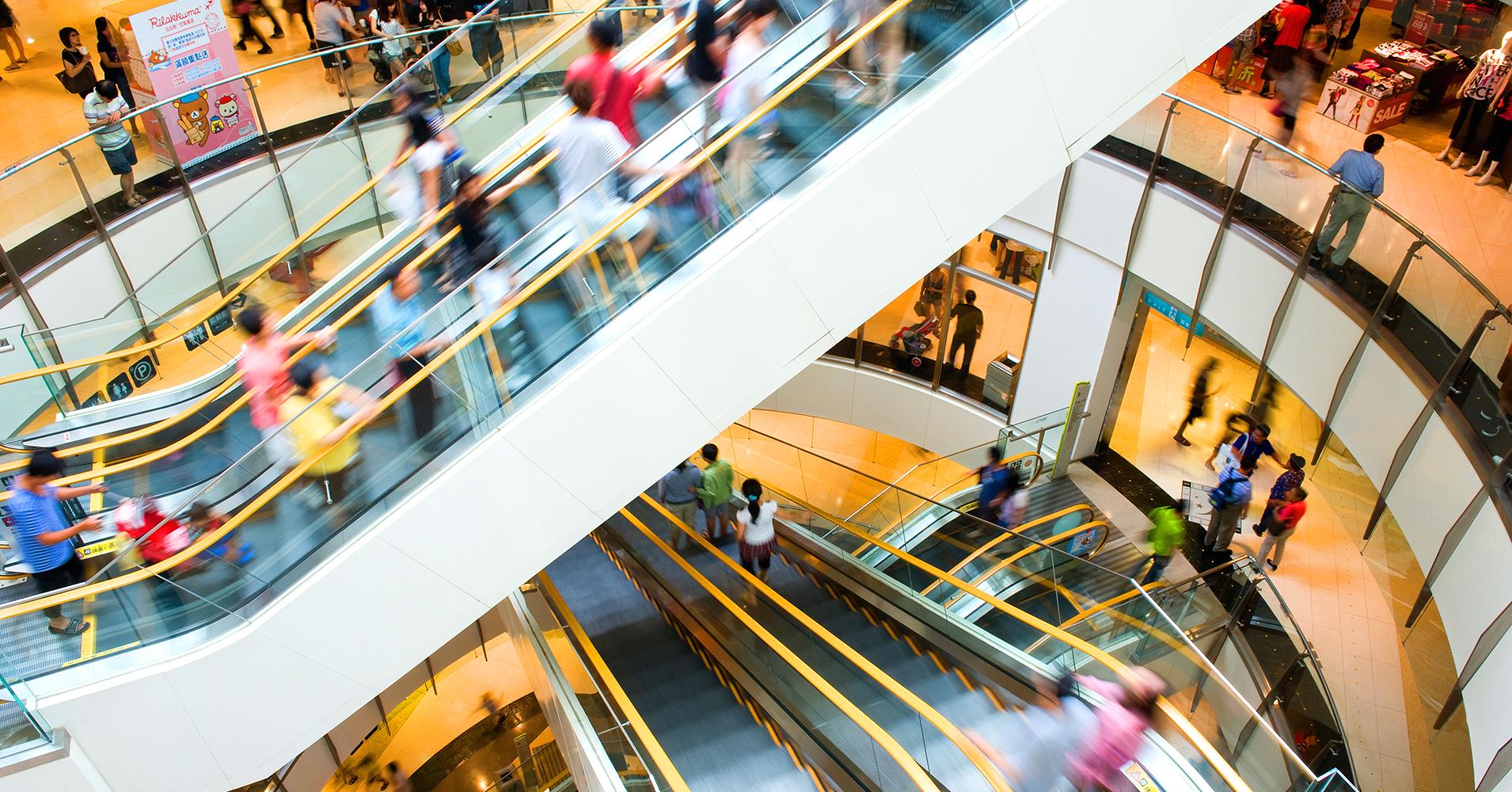Exploring the role of Media in Retail Media Networks - its power and new purpose
We live in an era where digital platforms have taken center stage in nearly every aspect of business, including advertising and consumer engagement: but the truth is, physical stores continue to hold a special place in the hearts of consumers, over and alongside digital channels. In fact, stores are currently enjoying a renaissance that highlights their enduring appeal.
This resurgence is not so much a surprise as it is a testament to a fundamental human trait: our innate desire to explore and experience. Retail spaces have evolved into vibrant hubs of activity, effectively leveraging this renewed interest to outpace traditional broadcast [television] media and e-commerce channels, to become the new mass media powerhouse in today's media landscape.
The emergence of Retail Media Networks
Retail media networks are built on retailer e-commercial and mobile platforms, allowing brands to reach consumers directly when they are shopping by these direct-to-consumer methods. This concept is not entirely new but has evolved significantly with advancements in technology and data analytics, so they have set the standard for using first party data to create the personalized experience of a lifetime.
Retailers such as Walmart, Target, and Amazon have significantly capitalized on their retail media networks by integrating sophisticated data analytics and technology to enhance targeted advertising opportunities. Walmart's network, for example, utilizes its extensive customer data to allow brands to tailor their ads to specific demographic and shopping behavior patterns, ensuring that advertisements are seen by the most relevant audience. Target, through its Roundel initiative, offers brands access to a wealth of shopper insights, enabling personalized ad experiences across its digital channels and within physical stores. Amazon, traditionally known for its online dominance, has seamlessly extended its retail media network into the physical realm through its acquisition of Whole Foods and the launch of Amazon Go stores. By integrating its sophisticated data analytics and deep learning algorithms into these physical locations, Amazon offers advertisers the ability to target consumers not just online but also in-store, where purchasing decisions are made. This strategy leverages the convenience and immediacy of physical shopping with the precision of digital targeting.
The resurgence of physical stores as a prime media channel for impressions and advertising can be attributed to several key factors, further solidifying their status as the new "TV" for the traffic and engagement they generate:
- Sensory engagement: Physical stores offer a sensory experience unmatched by digital channels. The tactile nature of shopping, the ability to directly interact with products, and the immediate gratification of purchase contribute to a more engaging and memorable shopping experience. This multi-sensory engagement captures consumer attention in a way that digital screens cannot, making physical stores a powerful medium for impactful advertising.
- Personalized experiences: Leveraging technology, retailers have transformed in-store shopping into highly personalized experiences. Through data analytics and AI, stores offer tailored recommendations, dynamic pricing, and immersive displays that captivate shoppers. This level of customization enhances the shopping experience, making each visit unique and increasing the likelihood of conversions right at the point of sale.
- Social interaction: Despite the convenience of online shopping, the value of social interaction in physical stores cannot be overstated. The personal touch of interacting with staff, the communal atmosphere of shopping centers, and the simple pleasure of shopping as a social activity draw consumers back to physical locations. These interactions create a sense of community and belonging that digital platforms struggle to replicate.
- Consumer behavior shifts: The pandemic-induced pivot to online shopping has spurred a significant countermovement, with consumers increasingly seeking the normalcy and tactile experience of in-store shopping. This hunger for experiential retail has led to a surge in foot traffic, transforming physical stores into bustling hubs for impressions and advertising. The store has become the new form of "TV" for the sheer volume of traffic it generates, offering advertisers and retailers a captive audience for their marketing messages.
- Physical store counts: Finally, the rapid expansion of physical storefronts creates massive scale, able to attracts millions of shoppers as a fertile audience that’s captive, contextual, and ready to transact. For the first time ever, the number of impressions generated at the store level is rivaling more traditional forms of media – and with data readily available – the correlations between advertising and transactions can be made more directly, establishing new ROI measures.
These factors combined illustrate why physical stores are not just surviving but thriving in the current retail landscape, outpacing digital channels in terms of engagement and effectiveness as advertising platforms. The evolution of the store into a dynamic, interactive medium marks a significant shift in how brands connect with consumers, making physical retail an essential component of modern marketing strategies.
Integrating Retail Media effectively in physical stores
Retailers have adapted their strategies to maximize the impact of their retail media networks within physical stores. Key strategies include:
- Digital signage and interactive displays: Leveraging dynamic digital signage and interactive displays to engage shoppers with relevant, eye-catching content that enhances the shopping experience and promotes specific products or offers.
- Mobile integration: Encouraging the use of smartphones in-store through apps that offer personalized deals, product information, and augmented reality (AR) experiences, seamlessly blending the digital and physical shopping journey.
- Data-driven personalization: Utilizing data analytics to understand shopper behavior and preferences, enabling retailers to tailor the in-store experience to individual needs, from personalized product recommendations to customized offers.
- Experiential marketing: Creating immersive, experiential zones within stores where consumers can interact with products in novel ways, fostering a deeper connection between the brand and the consumer.
- Powerful CMS Software: Integrating with a strong CMS provider, layered with ad-smart technology, helps manage content commingled with powerful ad-serving platforms that the media buying community can access programmatically.
Harmonizing retailer and advertiser objectives
From the perspective of retailers, the utilization of in-store digital retail media networks represents an opportunity to enhance customer engagement, increase sales, and generate additional revenue through advertising partnerships. Retailers aim to create a shopping environment that not only promotes their products but also offers valuable spaces for brands to advertise directly to consumers at the point of purchase. However, the goals of retailers and advertisers can sometimes diverge. While advertisers are primarily focused on maximizing the visibility and impact of their specific brands or products within the store, retailers must balance this with the need to maintain a positive shopping experience for all customers, promote a wide range of products (including their own private labels), and ensure that the in-store environment does not become overly commercialized or distracting.
To reconcile these potentially conflicting goals and make the most of the data they have, retailers can prioritize their data analytics efforts in several ways:
- Segmentation and personalization: By leveraging data from loyalty programs and in-store interactions, retailers can segment their customers based on shopping behavior, preferences, and purchase history. This segmentation allows for more targeted and personalized advertising that is likely to be more relevant and effective. Personalization can enhance the customer experience by making promotions more applicable to individual shoppers, which can increase conversion rates for advertisers without overwhelming customers with irrelevant ads.
- Optimizing placement and timing: Retailers can analyze foot traffic patterns and shopping behaviors to determine the most effective locations and times for digital ads. By strategically placing digital displays where they will have the highest impact and scheduling ads to coincide with peak shopping times or relevant seasonal trends, retailers can increase the effectiveness of the advertisements without compromising the shopping experience.
- Balancing content: To prevent in-store digital media from detracting from the overall shopping experience, retailers must carefully curate the content that is displayed. This involves balancing promotional content with useful information (such as store maps, product information, and special events) that enhances the shopping experience. Retailers can also set guidelines for the frequency and type of advertisements to ensure that the content remains fresh and engaging for customers.
- Privacy and trust: Retailers need to manage customer data responsibly to maintain trust and comply with privacy regulations. By transparently communicating how data is collected and used, and offering customers control over their data, retailers can foster a positive relationship with their customers. This trust is essential for the effective use of personalized advertising and for encouraging customers to share more data.
- Collaborative partnerships with advertisers: Retailers can work closely with advertisers to develop campaigns that align with the retailer's marketing strategies and store environment. By fostering a collaborative approach, retailers and advertisers can create campaigns that meet the advertisers' goals while contributing to a cohesive and positive shopping experience.
By prioritizing these strategies, retailers can effectively use in-store digital retail media networks to target their audience with personalized advertising, ensuring that both their goals and the goals of advertisers are met in a way that enhances the shopping experience for customers.
Humans are explorers at heart
At the core of the resurgence of physical stores is the undeniable truth that humans are explorers at heart. The in-store experience taps into our innate curiosity and desire for discovery. Walking through a store, we embark on a tactile journey, engaging with the world in a direct and personal way that online shopping cannot replicate.
The evolution of physical stores into mass media channels is not just about the convergence of retail and advertising; it's a testament to the enduring power of human experience. As retailers continue to innovate and integrate retail media into their physical spaces, they're not just selling products; they're curating adventures. And with the latest display and software technologies at their fingertips, retailers have a plethora of choices in digital signage and software services to help them build a retail media network through digital display so that it might perform in “in-store mode”, much like ecommerce platforms do for online shopping.
This transformation of retail spaces into hubs of exploration and interaction reflects a broader shift in consumer behavior. Shoppers are seeking more than just transactions; they're looking for connections, experiences, and a sense of community. Physical stores, with their ability to offer these in spades, have not only survived the digital onslaught but have emerged stronger, redefining what it means to be a mass media channel in the 21st century.
The renewed awareness towards physical stores as a dominant mass media channel is a multifaceted phenomenon driven by technological advancements, changes in consumer behavior, and the timeless appeal of the in-store experience. As we move forward, the integration of retail media within these spaces promises to enrich the shopping journey further, leveraging our fundamental desire to explore and discover, ensuring that the physical store remains at the heart of the consumer experience.
Share this
You May Also Like
These Related Stories

Alicia Esposito shares the top 2024 retail trends and implications for tech

Is the Future of Physical Retail DIY?


